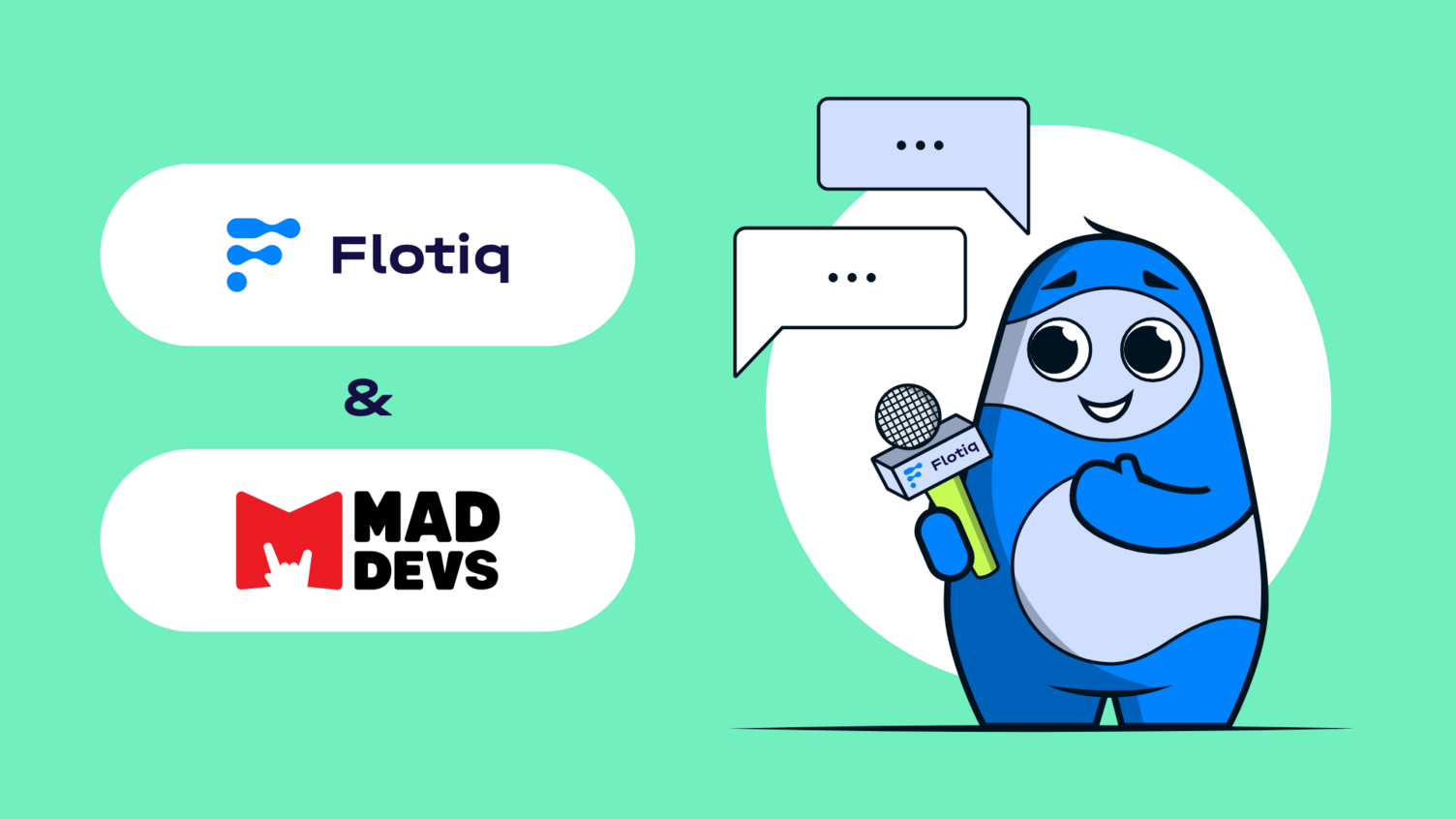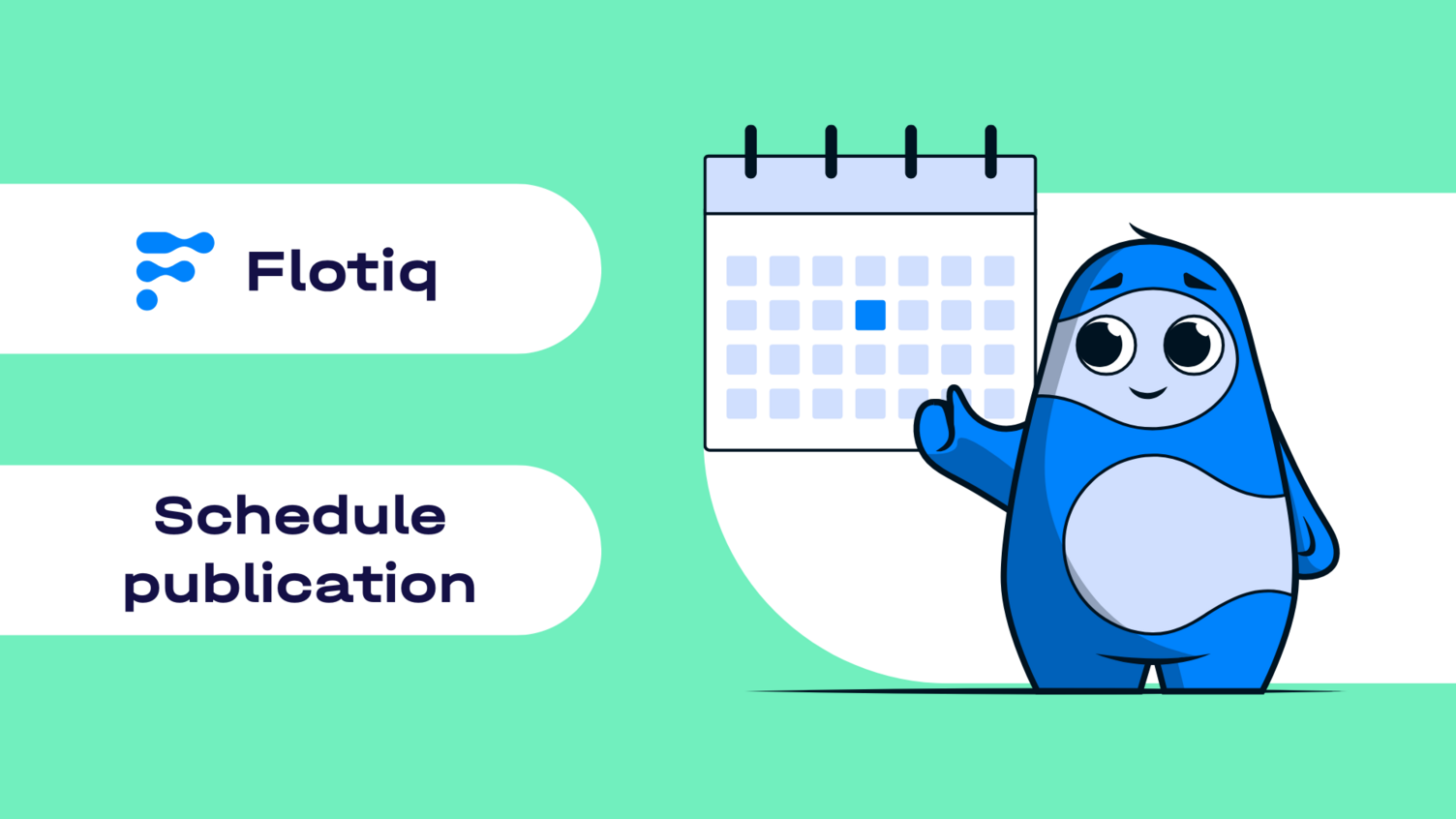Google indexing - common issues and fixes
So, you have created a new website or published a blog article, filled it with content, yet you still don't see any organic traffic? You have probably also read our article on how to index your site in Google and followed the steps, but you still don’t see results?
If your website or a specific subpage does not appear in Google search results, it means Google has not indexed it. This can be caused by various technical, content-related, or policy-related reasons that prevent search engines from properly crawling and processing your website. These problems can include simple technical errors or more complex algorithmic decisions by Google that affect how your site is ranked and displayed.
Some of the issues discussed here are technical. If you do not have access to the HTML code of your website or the ability to edit files on the server, share this article with your IT specialist. By following these simple steps, they should be able to fix the problem.
Check issues in the Google Search Console
Google Search Console (GSC) is the best tool for diagnosing indexing problems with search engines because it provides detailed reports on errors and exclusions that may prevent Google from including your pages in search results. It also allows you to take corrective actions and resubmit your pages for indexing.
Steps to check indexing issues:
- Log in to Google Search Console.
- Go to the Pages report in the Indexing tab.
- At the bottom, you will see the section "Why pages aren’t indexed", where a table lists errors along with the number of affected pages.
- Click on a specific error from the list to see which URLs are affected.
- Fix the error, then press "Validate Fix".
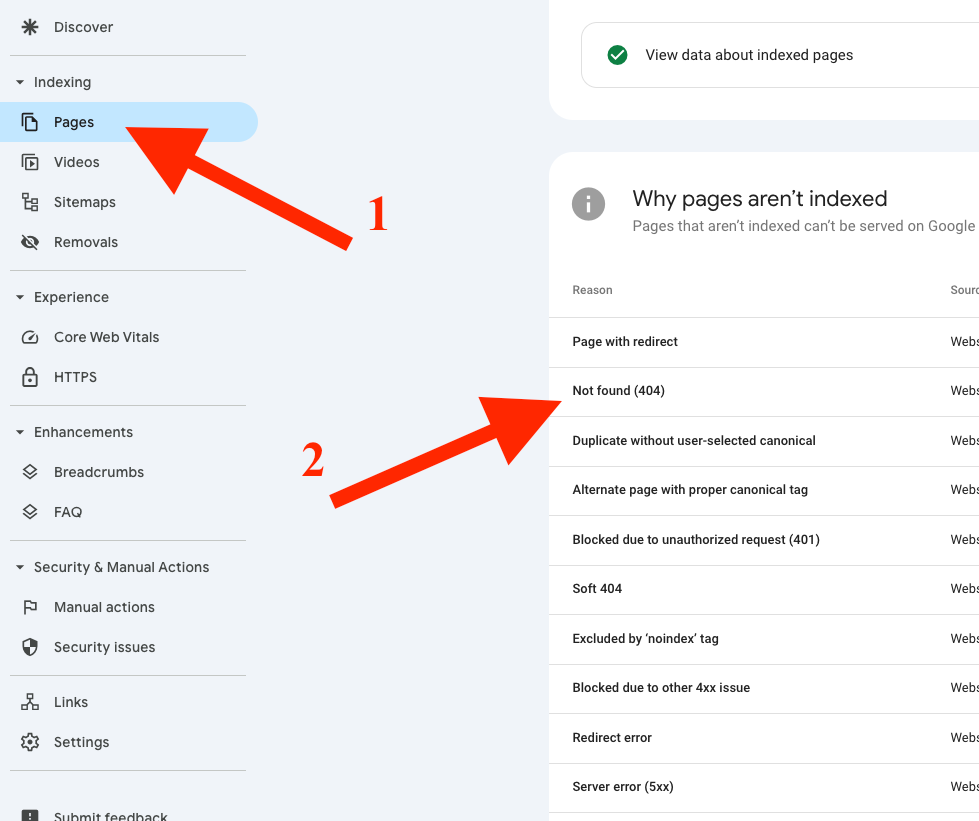
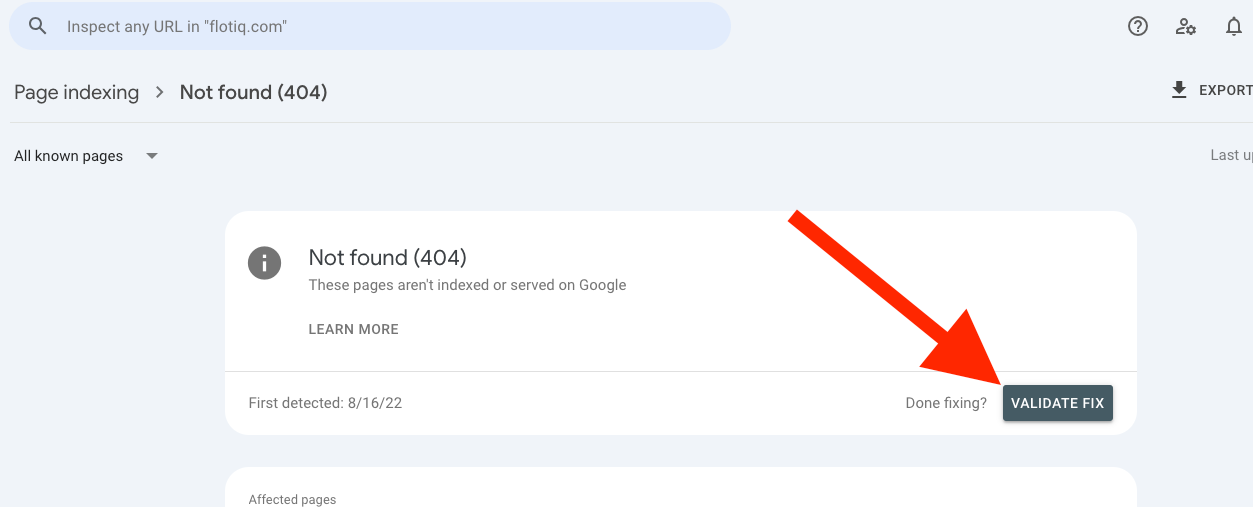
Common errors found in Google Search Console:
- Crawled – currently not indexed: Google has found and crawled the page but decided not to index it yet in search results.
- Discovered – currently not indexed: Google is aware of the page but has not crawled it to determine indexing in search results.
- Blocked by robots.txt: The page is blocked from crawling by your site's robots.txt file, which likely contains an exclusion for this page. You update the settings of your robots.txt file, to appear in search results.
- Excluded by 'noindex' tag: A noindex tag prevents Google from indexing the page in search results. This is an issue on your side and can be fixed by changing noindex tag to index in the head of your file.
- Soft 404: Google considers the page to lack valuable content.
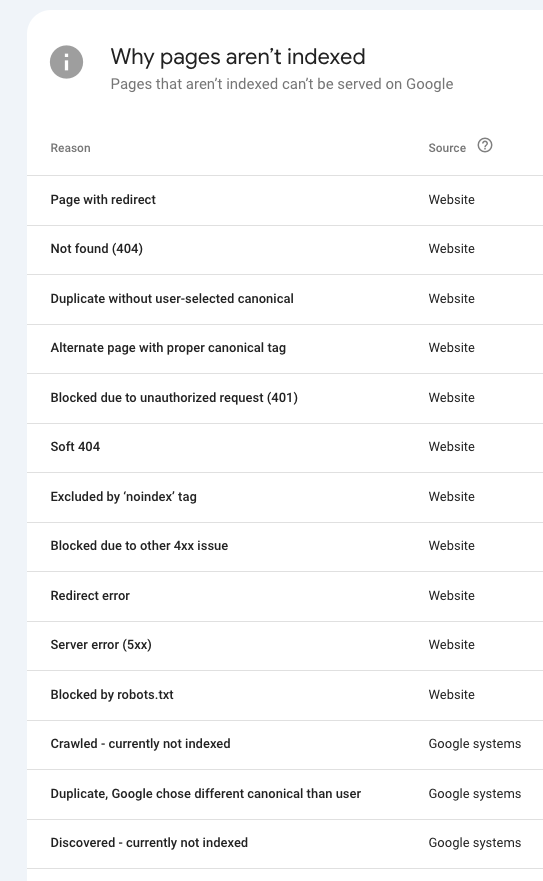
For each of these problems, necessary steps must be taken to remove restrictions and improve the content so that Google deems it worthy of indexing.
I need to mention here that, in Flotiq - a flexible headless CMS, we do have a native Google Search Console plugin, which helps building your content with GSC indexing, it looks like on below image:
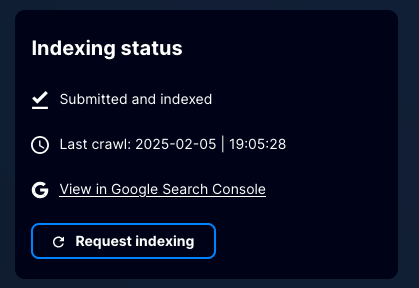
Try Flotiq for free, because it’s worth it!
Check if your site is technically blocking indexing
Technical misconfigurations can prevent Google from indexing your site in search results, such as incorrectly set meta tags, deindexing rules in robots.txt, or server directives that block search engine bots from accessing and processing your pages.
Common technical issues and their solutions:
Meta Tag robots set to noindex
If the page contains the tag:
<meta name="robots" content="noindex">
Google will not index it. This is a direct instruction to search engine bots that the page should not be indexed.
This problem often occurs when:
a) Your CMS applies the noindex tag by default.
b) A test site accidentally carries over noindex settings to the live site.
How to fix it?
- Open the source code of the affected page. If your site is more advanced, look for a file named "head", "header", or "meta". Otherwise, find the <head> section in the code.
- Search for <meta name="robots" and check if it contains content="noindex".
- If found, remove it or change it to: <meta name="robots" content="index, follow">
- follow allows them to follow outgoing links.
- Save the file and upload it to the server to replace the old version.
- Request reindexing in Google Search Console.

Robots.txt file blocking Google
A misconfigured robots.txt file can accidentally block Google from crawling your site.
How to fix it?
- Check your robots.txt file by visiting yourdomain.com/robots.txt.
- Look for this line:
User-agent: *
Disallow: /
- This means that all indexing bots are blocked on your site. Remove or modify this line.
- Ensure that important pages are not blocked by lines such as: Disallow: /your-page/
- Save and upload the updated robots.txt file.
- Test it in Google Search Console under Settings → robots.txt → Open report.

X-Robots-Tag in HTTP headers
Some servers send an X-Robots-Tag: noindex directive in HTTP headers, preventing Google from indexing the page.
How to fix it?
Use the following command to check HTTP headers:
curl -I https://yourdomain.com
- If X-Robots-Tag: noindex appears, edit the server configuration to remove it.
- Restart the server and request indexing in Google Search Console.
Canonical tag issues
An improperly implemented canonical tag can mislead Google about which version of the page should be indexed.
How to fix it?
Ensure that your pages have the correct canonical tag format:
<link rel="canonical" href="https://yourdomain.com/your-page"/>
Make sure it points to the preferred version of the page.

Other technical issues
Ensure there are no long redirect chains or loops (where one page redirects to another, and that one redirects back).
Avoid excessive JavaScript that hides important content in the HTML document and loads it only later for the user.
Check if your site is accessible to users without requiring login, as Google will not log in to crawl your site.
Duplicate content
Google struggles with duplicate content and may not index all versions of a page. Duplicate content occurs when:
- The content is copied 1:1 from another page.
- Multiple URLs serve the same or very similiar content (Even if the text is not an exact copy, Google can recognize when you are covering the same topic repeatedly or have slightly reworded existing content from another source).
- Pagination causes duplicated meta-description
How to fix it?
- Use canonical tags to specify the preferred URL.
- Merge similar pages to consolidate authority. If you do this, set 301 redirects from the removed URLs to the target article.
- Ensure each page has unique, original content.
Low-Quality Content
If your content lacks valuable information, Google may not index it. Crawlers are designed to show users only meaningful content that answers their queries and can help them.
How to fix it?
- Ensure each article has at least 600 words.
- Add real-life examples, images, and internal links.
- Provide detailed, well-researched answers to user queries.
AI-Generated or Spam Content
AI-generated content or spam is a problem in SEO because it often lacks originality and value, which Google actively discourages. According to Google's guidelines, content created primarily for search engines rather than users may be penalized.
Google's algorithms, including SpamBrain and the Helpful Content Update, detect low-quality AI-generated text by analyzing readability, duplication, engagement metrics, and whether the content provides unique insights.
After all, content generated by tools like ChatGPT is nothing more than a rewording of existing information. AI simply "rewrites" it and presents it as a response. If that's the case, it means you're not creating anything groundbreaking, just rehashing a topic that someone else has already covered.
However, this does not mean you shouldn't use AI - on the contrary, I use it every day, but the key is to use it wisely. AI should be used as an assistant, not a full content generator. Every AI-generated piece must be reviewed and edited by a human to ensure accuracy, add expert insights, and make it genuinely useful.
Avoid excessive keyword stuffing, write naturally, and prioritize user intent over SEO tricks. Adding personal experiences, expert references, and proper citations helps establish credibility.
Google is not against AI, but it expects content to be high quality, valuable, and written with users in mind, rather than solely for search rankings.
How to fix it?
- AI should be used as an assistant, not a full content generator.
- Every AI-generated piece must be reviewed and edited by a human.
- Avoid keyword stuffing - write naturally and prioritize user intent.
Irrelevant to Search Intent
Lack of relevance to search intent is a serious issue that can prevent your page from being indexed or ranking well in Google. Search intent refers to the reason behind a user's query - whether they are looking for information, comparing products, or making a purchase. If your content does not match what users expect when searching for a given keyword, Google may consider it unhelpful and exclude it from indexing.
Google’s algorithms analyze user behavior, such as how long they stay on a page, whether they quickly return to search results (pogo-sticking), and how well your content aligns with typical user queries. If visitors frequently leave your page because they don’t find what they were looking for, Google may determine that your site is irrelevant and lower its ranking or remove it from the index.
Google knows a lot about us - and even more about our websites. It tracks session duration, scroll depth, and post-click behavior, such as whether users continue searching for answers after leaving your page. These and many other factors help it determine whether a user has found the answer to their query.
How to fix it?
Make sure your content aligns with the intent behind your target keywords. Study search intent by analyzing top-ranking pages for your keywords (you can use tools like Ahrefs or Semrush for this). If those pages contain detailed guides, your page should also provide in-depth information rather than just a short summary.
- Optimize your headings, meta descriptions, and structure so that users immediately see that your content is relevant to their query.
- Use structured data (Schema markup) to help Google understand the purpose of your content.
Aligning with search intent not only increases your chances of being indexed but also improves engagement and conversions.
Slow and Heavy Website
A slow and heavy website can negatively affect Google’s indexing because Googlebot has a crawl budget - a limited number of pages it can crawl on a site within a given timeframe. If your site loads too slowly, Google may crawl fewer pages, delaying or even preventing the indexing of some of them.
Additionally, slow-loading pages provide a poor user experience, leading to a high bounce rate and lower engagement. This signals to Google that the page may not be valuable. Since Google prioritizes the best possible experience for its users and also considers environmental impact! Therefore, it favors websites that load quickly and are lightweight (low resource consumption).
Google’s Core Web Vitals & Performance Metrics
Google evaluates site speed using metrics from Core Web Vitals, including:
- Largest Contentful Paint (LCP) – measures how quickly the largest visible element loads.
- First Input Delay (FID) – measures responsiveness to user interactions.
- Cumulative Layout Shift (CLS) – measures visual stability (how much content shifts during loading).
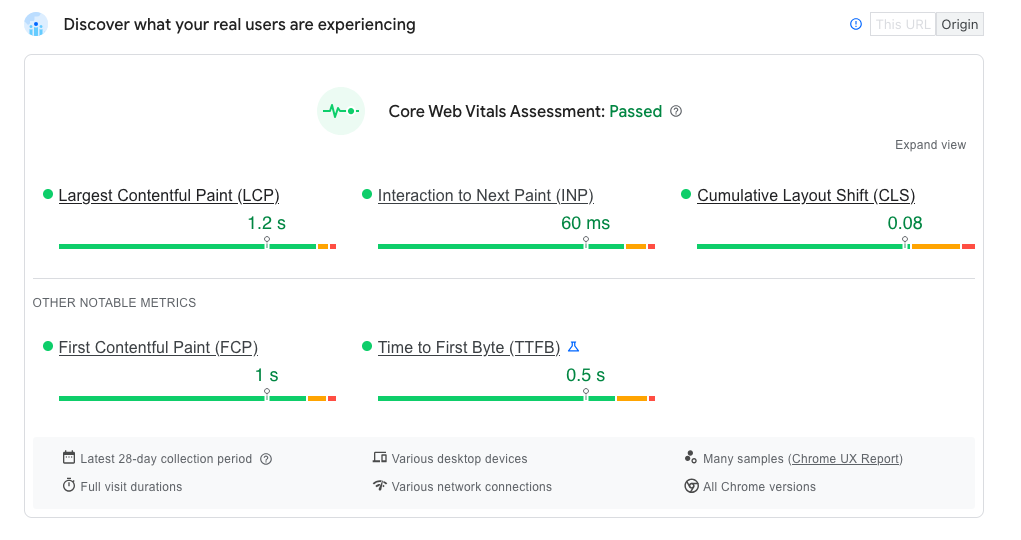
Websites that perform poorly in these metrics may face indexing and ranking issues.
Google also follows a mobile-first indexing approach, meaning that if your mobile version is slow (even if the desktop version is fast), indexing issues may still occur.
How to check if Google prioritizes mobile crawling for your site?
- Go to Google Search Console
- Inspect any URL (e.g., your homepage)
- Check the "Crawled as" section to see if the page was crawled as Google Desktop or Google Smartphone
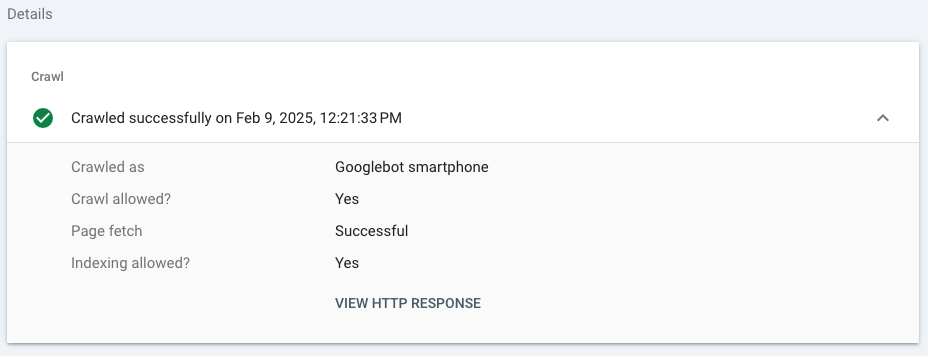
To fix the issue described in this section, optimize your website speed by:
- Compressing images to reduce file sizes
- Use LazyLoading for your media
- Enabling browser caching to speed up repeat visits
- Reducing unnecessary JavaScript and CSS to improve load times
- Using a Content Delivery Network (CDN) to distribute content more efficiently
Running tests on Google PageSpeed Insights or Lighthouse can help identify bottlenecks. However, don’t treat these tools as the ultimate source of truth - they can be manipulated, but that’s not the point.
Your main goal should be to genuinely improve your site’s speed and efficiency, as this enhances both Google’s crawling process and user experience, increasing the likelihood of indexing and securing higher rankings in search results.
There are many ways to optimize your website’s performance and lightness. One effective approach is to separate the backend from the frontend, allowing you to choose the most lightweight and optimized setup for your needs.
In this case, I recommend using Flotiq as a headless CMS for content creation. This will not only make your website lightning-fast but also help you maintain structured content, leverage SEO-friendly plugins, and streamline the content-writing process.
Try Flotiq for free - no credit card required.
Summary
If your website is not appearing in Google, despite being submitted for indexing following the steps in our guide, start by diagnosing the issue using Google Search Console. Ensure that your site follows SEO best practices, loads quickly, contains high-quality content and avoids technical indexing blocks.
Consistently resolving these issues increases the likelihood that Google will index your content and display it in search results.
Use tools that notify you of indexing problems and perform ongoing technical audits for your site. Google Search Console can send you email alerts about detected errors, while tools like Ahrefs or Semrush can conduct regular audits, providing a list of improvements.
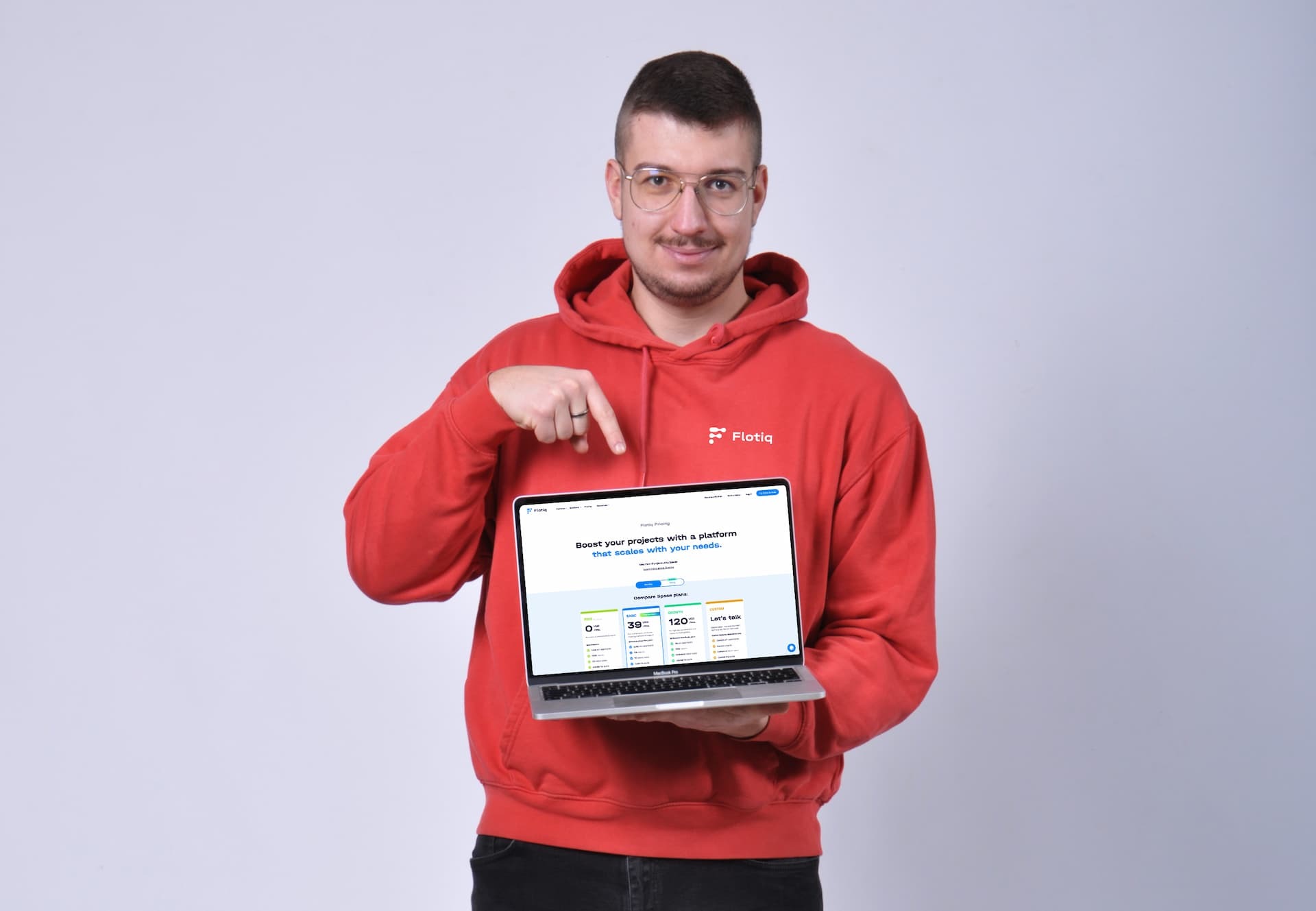
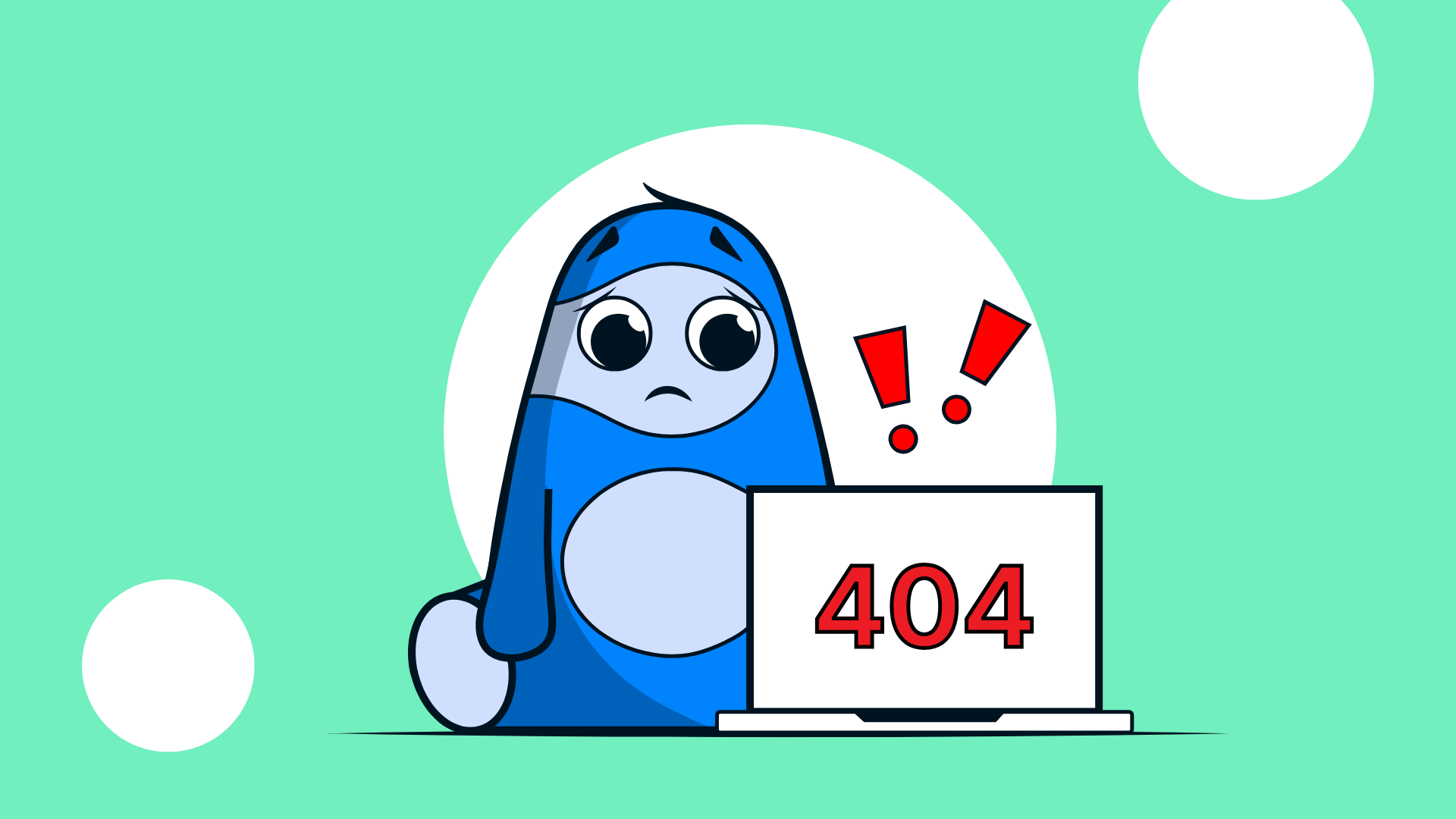

.png)
